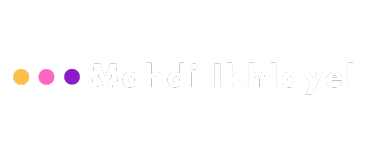Several general-purpose Life Cycle Assessment (LCA) software exist (e.g., SimaPro, GaBi ts, Umberto, and OpenLCA). However, when it comes to Waste Mmanagement (WM), specific waste management software and tools are available too. Such software and tools include the IWM-2 software. IWM-2 is offered only with the “Integrated Solid Waste Management: A Life Cycle Inventory, Second Edition” book by Forbes R McDougall, Peter R White, Marina Franke, and Peter Hindle. The book itself is one of the must-read books for scholars concerned about WM and particularly integrated WM. The book was one of the earlier books that discussed the Integrated Waste Management (IWM) concept and from the LCA perspective. Though the software is old and it was not updated since the release of version 2.5 (IWM-2) on 2001, and it calculates very limited emissions for air and water only; it is still is very useful for understanding and practicing the IWM concept and applying LCA with WM (e.g., climate change impacts through estimating the GHG emissions assessment). It works on up to Windows 7; and the book can be bought from the Wiley Online Library. However, please ensure that the CD that contains the IWM-2 software included from wherever you want to order the book.
The second software is the WRATE (http://www.wrate.co.uk). The software is used to evaluate the environmental impacts of WM activities in a systematic approach during the whole life with a very simple user-friendly interface. One of the unique advantages of using WRATE is it based on the ecoinvent Life Cycle Inventory (LCI) database. The user can calculate emissions to the medium (water, air, and soil) with several Life Cycle Impact Assessment (LCIA) methods. Inventories can also be exported to MS-EXCEL. Another critical future is that the user can specify the electricity mix of a particular city or country (the share of coal, oil, gas, nuclear energy, renewable energy, and waste, etc.). Describing the exact electricity mix in an LCA model is crucial as the LCA results are highly sensitive to the energy input. Another critical future is that might it doesn’t exist in other WM software; in which the user can specify the waste stream managed in specific details. For example, with other MSW software and tools, the user can insert waste as organic, paper, plastic, glass, metals, etc., but without the ability to specify what type of organic, paper, and plastic waste, etc. With WRATE, the user can specify the share of biological waste as garden waste, food waste, etc.; paper waste as newspaper, magazines, recyclable paper, card packaging, etc.; plastic waste as bags, packaging film, and other types; and metal waste as ferrous metals, steel and food drink cans, and non-ferrous metals (e.g., aluminium drink cans). However, WRATE is more suitable for the business and government sectors.
Other LCA tools for WM are trhose MS-Excel based. Such tools include UNU-IAS Urban Co-benefit Tools which allows scenario comparison with a wizard style parameter insertion; developed at the Institute for Advanced Study of Sustainability, the United Nations University. Another tool is SWM-GHG Calculator which is a GHG-focused tool. Many other related tools can be accessed on the Greenhouse Gas Protocol’s website. The Municipal Solid Waste Decision Support Tool (MSWDST) available at https://mswdst.rti.org is one of the most useful WM software for decision making. You might also want to look at Waste Reduction Model (WARM) developed by the United States Environmental Protection Agency (EPA) and is available at https://www.epa.gov/warm.
Other Software and tools that might be helpful in doing LCA of WM are those are for landfill characteristics and emissions. These include the LandSim (http://www.landsim.co.uk). LandGem by EPA is another useful model for landfill gas emissions, available at https://www.epa.gov/catc/clean-air-technology-center-products#software.
For the case of studying WM in developing countries, studying the environmental impacts from uncontrolled (unsanitary or unmanaged landfill), open dumping, and open burning might not seem as an easy job with those software packages and tools. That might be because these improper WM processes are prohibited in Europe and USA, and therefore, software and tools developed for those countries don’t include the needed emission factors. Other reasons might be difficulties in acquiring these emissions factors. However, the user might find such factors in the literature concerns WM in developing countries. You can practically look for them on WM focused journals such as the Waste Management and the Waste Management & Research Journals or in other similar journals. There are, however, some approaches to model those WM processes through understanding the differences, for example, between sanitary and unsanitary landfills.
General LCA purpose software such as SimaPro is still very useful as they provide extensive LCI data, offer scenario and modeling environment, and analytical tools including sensitivity and Monte Carlo analysis. The LCI with several LCA software are waste type-specific, country-specific, and energy mixes specific. Electricity mixes can also be modeled individually. Several MW processes are included such as landfill of several types of waste, and similarly for incineration; recycling of base metals and precious metals as well as recycling of materials (e.g., paper, plastic, glass, etc.); and the ability to model energy recovered from landfills, incinerators, and waste recycling processes.
The user needs to be careful that some of those LCI processes might include the avoided burden of energy for landfill, incineration, and recycling processes where they it might be needed to model the avoided burden if not considered by an individual process.
For the avoided emissions from recycling, it imperative to consider if the recycling processes include avoided emissions from the production of same virgin material or not. Another important point is that, a user has to be very vigilant with LCI data selection for each WM process. It is important to look at the documentation for each of them to understand the system boundaries of each process, the waste share, energy efficiencies, landfill gas recovery ratio from landfill, geographical location, etc.
However, LCA, in general, is a procedure-based method. Understanding the theory and applications are an essential thing before doing an LCA study. It is recommend for a user to make sure look she/he understand the details of the theory of LCA and to read several related kinds of literature.

